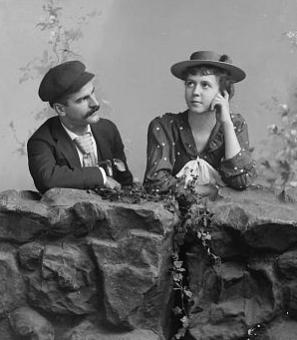The Edmonson Sisters of Alexandria: Legends in the Fight Against Slavery
In the years leading up to the Civil War, the debate over the future of slavery raged through the halls of Congress. Abolitionists in the North, however, had little faith that their fight could be won through political discourse. A quarter of Washington, D.C.’s black population was enslaved, and the slave trade in the District was one of the most lucrative markets in the country.
Abolitionists reasoned that they needed to resort to other means to combat slavery in this socially hypocritical and politically entrenched environment. In the early months of 1848, a local cell of the Underground Railroad devised a plan to smuggle slaves out of the area and take them north to free territory.
Mary Kay Ricks, author of “Escape on the Pearl,” notes the plan was designed to “get them out of Washington and arrive in the North and say, ‘We have escaped from the nation’s capital.’ They wanted to shine a light more broadly on it.”[1]
Word quickly spread among slaves and their freed relatives in Washington, Georgetown, Alexandria, Virginia, and nearby Maryland that a boat would take them out of the District to New Jersey. Punishment for escaping slaves and free people who assisted them was severe, so great pains were made to keep the plan secret.
Among the slaves who heard the call were 13-year-old Emily and 15-year-old Mary Edmonson. Emily and Mary were two of 14 children of Paul and Amelia Edmonson of Montgomery County, Maryland. Paul had been set free by his master’s will, but Amelia remained a slave. According to the laws of the time, children born of an enslaved mother inherited her legal status.
The Edmonsons owned a farm and Amelia was allowed to live with her husband while serving her master. The children were hired out as slave labor to people in Washington, D.C., with the wages earned going to their master. When word came of the escape plan, Mary, Emily and four of their brothers readily accepted the risk to escape to the North.
The original plan was to smuggle seven slaves out of the District on the sixty-five-foot schooner Pearl, anchored at the Seventh Street Wharf on the Potomac River. But 77 slaves ultimately showed up, belonging to “41 of the most prominent families in Washington and Georgetown and were valued at $100,000.”[2]
The original route of the Pearl called for the overloaded boat to sail down the Potomac, up the Chesapeake Bay to the Delaware River, then to New Jersey. Rough waters and unexpected bad weather kept the ship from entering the Bay, and the following morning they were spotted by a passing steamer.
At the same time, when daylight broke in Washington, the mass escape brought irate slave owners into the street. The Pearl was captured and towed back to the District.
Harriet Beecher Stowe wrote in her 1853 book, “A Key to Uncle Tom’s Cabin,” “When the cortege arrived with the captured slaves, there was a most furious excitement in the city. The men were driven through the streets bound with ropes, two and two. Showers of taunts and jeers rained upon them from all sides. The whole account of that memorable capture of the Pearl...produced such a sensation in Washington.”[3]
The captured slaves, Mary and Emily among them, were immediately returned to bondage. Slave trader Joseph Bruin locked them up in his headquarters at 1707 Duke Street in Alexandria. Bruin decided the Edmonson sisters would fetch good money as “fancy girls,” a euphemism for prostitutes, in New Orleans, so they were shipped there against the protests of their father, who was desperate to secure their freedom.
The sisters were promptly shipped back to Alexandria after an outbreak of yellow fever in New Orleans. Bruin agreed to sell them back to their father for $2,250, but if he could not raise the money, they would be sent back to New Orleans. Edmonson enlisted the help of abolitionist preacher Henry Ward Beecher, head of the Plymouth Church in Brooklyn, New York. Beecher was an avid abolitionist and the Plymouth Church was a focal point of anti-slavery activity.
Beecher, whose sister Harriet Beecher Stowe wrote “Uncle Tom’s Cabin,” agreed to help Edmonson. Beecher’s congregation raised the money to purchase Mary and Emily and they were freed on November 4, 1848.
The Edmonson sisters continued to benefit from the help of Beecher’s congregation, who contributed money for their education. While they attended Central College, an integrated institution in Cortland, New York, the sisters spoke on behalf of the abolitionist movement. They attended an important anti-slavery meeting in August 1850 to protest the Fugitive Slave Act.[4]
The Beechers continued to support Mary and Emily’s education, supporting their enrollment at Oberlin College in Ohio in 1853. Shortly after, Mary contracted tuberculosis and died. Emily married in 1860, and her family later purchased land and settled in Anacostia. She remained a figure in the fight for African American rights until her death in 1895.
In 2010, a statue of Mary and Emily Edmonson was erected in Alexandria where Bruin’s slave pens once stood.
Footnotes
- ^ Quoted in “Failed Escape Sheds New Light on D.C. Slavery,” NPR Morning Edition transcript, May 9, 2007. http://www.npr.org/templates/story/story.php?storyId=10103500
- ^ Quoted in Maggie MacLean, “Edmonson Sisters,” History of American Women, January 22, 2016. http://www.womenhistoryblog.com/2016/01/edmonson-sisters.html
- ^ Quoted in Shiba Russell, “Edmonson Sisters,” NBC Learn Video documentary transcript, June 20, 2014. http://www.nbclearn.com/portal/site/k-12/flatview?cuecard=70317
- ^ The Fugitive Slave Act of 1850 gave slave owners power to arrest fugitive slaves anywhere in the United States and return them to bondage. http://avalon.law.yale.edu/19th_century/fugitive.asp


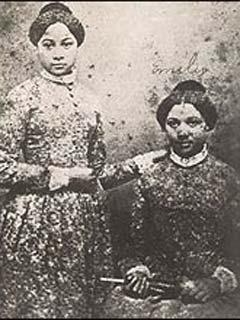
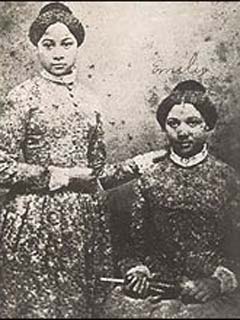
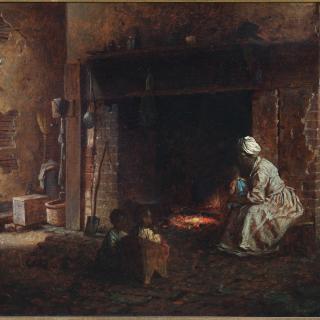
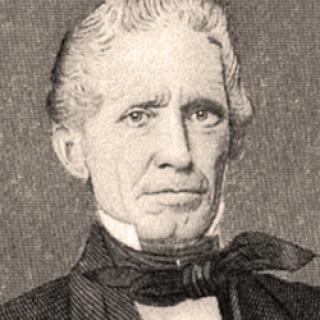
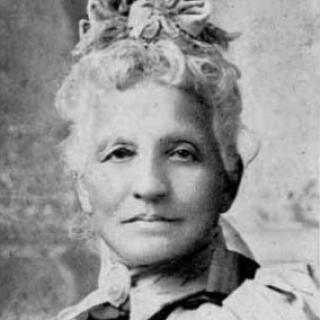
![Sketch of the mythical fuan by Pearson Scott Foresman. [Source: Wikipedia]](/sites/default/files/styles/crop_320x320/public/2023-10/Goatman_Wikipedia_Faun_2_%28PSF%29.png?h=64a074ff&itok=C9Qh-PE1)











